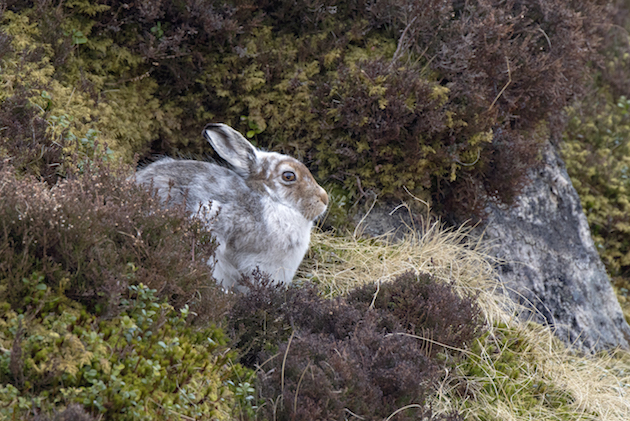Win CENS ProFlex DX5 earplugs worth £1,149 – enter here
Mountain hare numbers on the rise according to latest data
 Mountain Hare (Lepus timidus) in early spring coat, Deeside, Scotland
Mountain Hare (Lepus timidus) in early spring coat, Deeside, Scotland
Mountain hares are Britain’s only truly native Lagomorph and in recent years their numbers have been in steep decline due to climate and land use change. However, the new data shows that under the care of Peak District gamekeepers they are doing well. In order to understand how populations of the animals were faring, experts from the GWCT trained local gamekeepers in the methods used by their Scottish counterparts for counting hares.
These methods, which were developed by a group of land management and gamekeeping organisations, are widely accepted as the most accurate and consistent approach ever developed.
Instead of using lamps or dogs as has been done previously, the keepers used handheld thermal spotters to observe and count the animals at night. Richard Bailey, Peak District Moorland Group coordinator who helped arrange the surveys, explained: “Mountain hares are predominantly nocturnal animals, so it makes sense that the night time counts are providing more successful and reliable population estimates than day time counting. The counts proved that the hares are doing well on the districts grouse moors.”
Lead author Dr Nick Hesford of the GWCT, explained: “Preliminary results suggest that the numbers of hares recorded by gamekeepers may be equivalent to a population density of around 52-126 mountain hares per km2.This is similar to the densities recently recorded in their core range in Scotland and between two to five times higher than the most recent estimates at other sites in the National Park.
“The threats of traffic accidents, the isolation of the Peak District population, disease and climate change remain, but this survey is welcome news for the species. Although we only have data from one year of surveys so far, the adoption of this new methodology in the Peak District is a breakthrough for the population, and it is our hope this survey continues to help conservation efforts in the future.”
Mountain hares were once found across the British isles, however they entirely died out in England before they were reintroduced to the Peak District as sporting quarry in the 19th century.
Related Articles
Get the latest news delivered direct to your door
Subscribe to Shooting Times & Country
Discover the ultimate companion for field sports enthusiasts with Shooting Times & Country Magazine, the UK’s leading weekly publication that has been at the forefront of shooting culture since 1882. Subscribers gain access to expert tips, comprehensive gear reviews, seasonal advice and a vibrant community of like-minded shooters.
Save on shop price when you subscribe with weekly issues featuring in-depth articles on gundog training, exclusive member offers and access to the digital back issue library. A Shooting Times & Country subscription is more than a magazine, don’t just read about the countryside; immerse yourself in its most authoritative and engaging publication.







